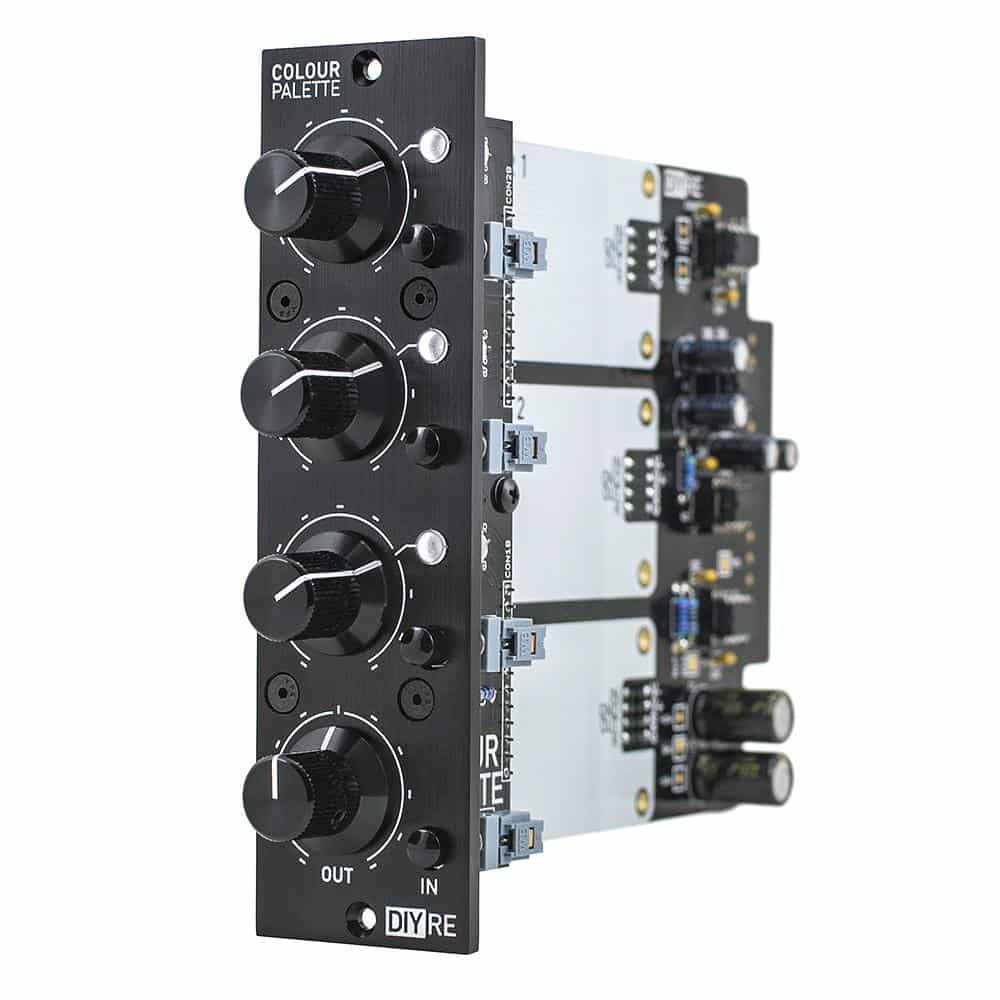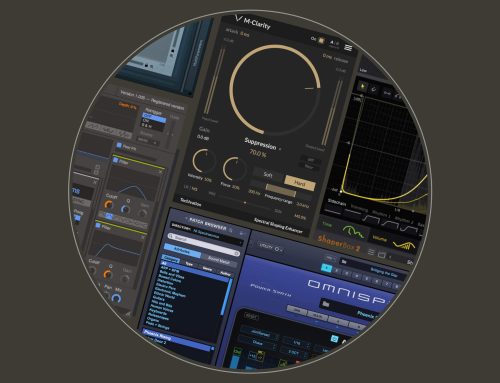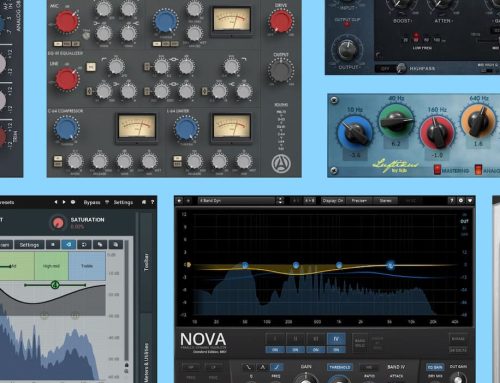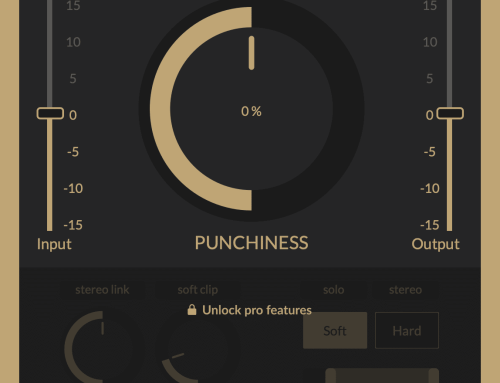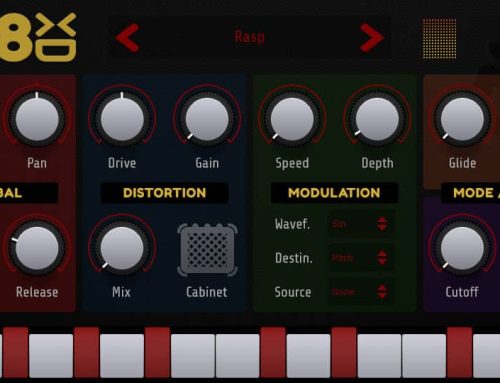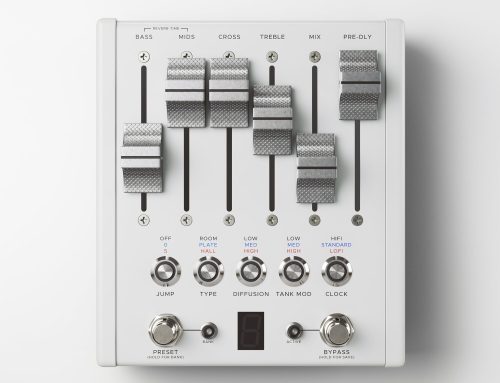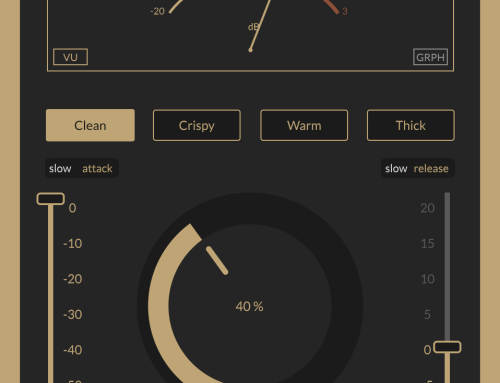Intro
As more and more software companies develop plugin emulations of analog gear to satisfy the needs of engineers for harmonic saturation and analog color, DIYRE is taking a slightly different approach. They believe in analog color and harmonics being generated by real analog gear at the price of software plugins. That covers an enormous part of the studio market that is filled with engineers who want to use the analog gear for coloring purposes but can’t quite afford it.
In short, the idea behind this concept was to create a 500-series palette that would hold different interchangeable “color” modules and would allow the user to completely customize their own unit. Its founder, Peterson Goodwyn, describes it as an open-source modular harmonics generator.
After the completion of a successful Kickstarter campaign, his idea grew beyond the borders of his own company (DIYRE). Other gear developers are now jumping onboard and taking advantage of the open-source concept by developing their own palettes and colors, all following the same standard and allowing for system-to-system integration.
With the significant growth of this modular system, we can now find color modules that go beyond just harmonics. There is a variety of EQ and filter circuits, compressor circuits, and even delays that allow for serious customization.
Some modules like the ones made by “Louder Than Liftoff” (LTL) have tiny trimpots on the PCBs that allow for fine adjustments to values like compressor ratio, delay settings, and EQ filters.
Harmonic Equalizer
Today I am reviewing my own processor which is something I like to call Harmonic Equalizer. I use it as a 2-band EQ with set values. The “Harmonic” side of it comes from all the wonderful rich harmonic goodness generated from all 3 colors.
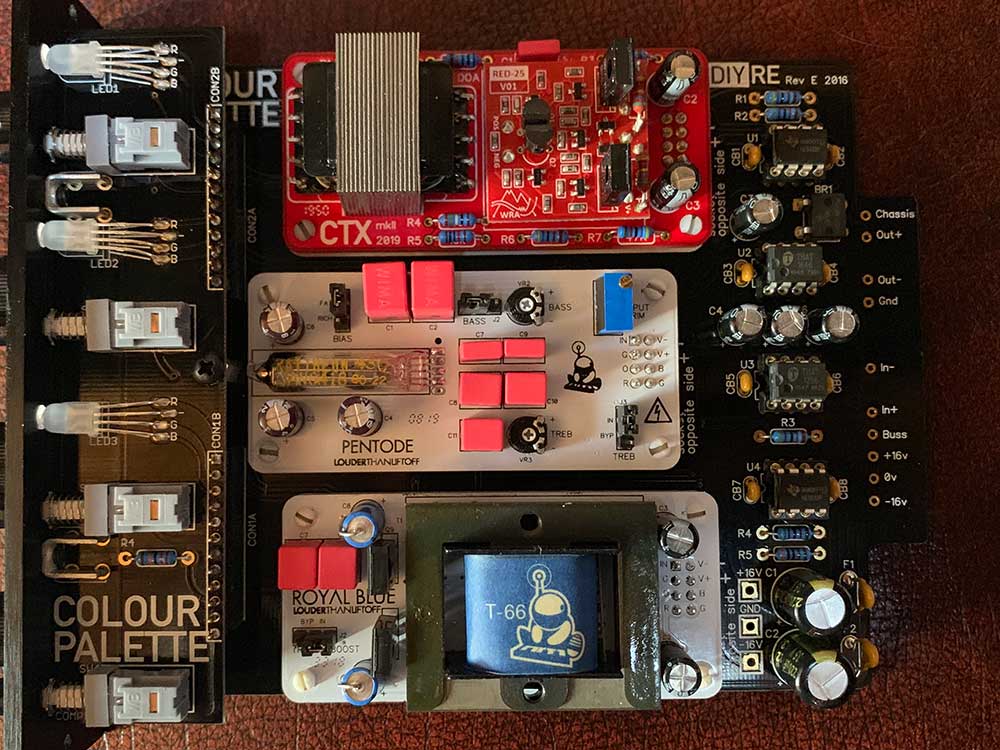
The colors and their order in the Harmonic Equalizer are as follows:
- DIYRE CTX MK2 + RED25 OpAmp
- Louder Than Liftoff Pentode MK2 Tube
- Louder Than Liftoff Royal Blue Transformer
The CTX is pretty much just passing the signal through as it doesn’t give me any options for fine adjustments on the PCB. The Pentode Tube color, on the other hand, I set to “FAT” from “FAT/ RICH”. The FAT bias setting configures the tube for predominantly even harmonics (2nd order), while the RICH bias offers a more even blend of 2nd and 3rd order harmonics. I chose FAT as I wanted to use this color to target mainly the low-end of the signal. Additionally, I switched ON both Treble and Bass on the Pentode and boosted the Bass on maximum (+8 dB) with a tiny screwdriver. The Royal Blue transformer color had only one option for fine adjustment and that was enabling the Treble boost at 4.7kHz (+5 dB).
In essence, what this Harmonic Equalizer does is the very popular smiley-face EQ with a bump in the low-end (around 80Hz and below) and a bump in the higher-mids (4.7kHz). On the front panel of the palette, I am able to engage the individual bands of the EQ with the individual bypass switches, while the rotary knobs allow me to dial saturation without increasing or decreasing the EQ gain on the two bands. The best part of it all is harmonic content generated from each of the 3 colors, which makes everything bigger, fatter and denser.
Performance and Uses
In most cases where I want to dial minimal saturation and just use the palette as a 2-band equalizer, I find myself just engaging the individual colors and boosting the rotary knobs no more than +25%. That gives me fantastic results every time I need that smiley face EQ.
Kick drums running through that process sound more finished and processed. The CTX makes the sound more focused and upfront with a slight hint of presence, while the Pentode boosts and thickens up the low-end. Usually, the attack of a kick drum sits around 4-5 kHz, so the Royal Blue provides a massive boost in attack and snap in addition to the extra transformer thickening. Due to the nature of saturation, all those colors also apply a tiny bit of natural transformer compression, which makes the kick drum that much more focused and even. The only way I can describe the results of the Harmonic Equalizer on a kick drums is just – sounding more finished. That being said, this processor adds a very particular sound that obviously wouldn’t work for every kick drum and every situation.
On a snare drum, the results are also fantastic. The subtle harmonic distortion at 25% in combination with a somewhat gentle slope of the low boost from the Pentode gives the snare loads of body and weight, while the 4.7 kHz boost of the Royal Blue targets the presence. That makes it easier for the snare to cut through louder mixes without any harshness. I would definitely recommend using an HP filter after the Harmonic Equalizer on a snare as we don’t want any unwanted low-frequency mud interfering with the low-end of a kick or a bass guitar.
Needless to say, the Pentode +8 dB boost on the low-end should be used with caution and plenty of high-passing when applied on a bass guitar. The results are very similar to the ones on a kick drum. Blowing a speaker cone isn’t that difficult at higher volumes. Generally speaking, this processor will emphasize low-end in instruments that are already rich of it and will do the same for instruments with high-end.
When processing multiple sources at once, like a whole beat, one should balance with caution. The Pentode can seriously push the bass-forward, so whenever possible rebalancing and turning the bass guitar down before the processor can yield great results.
Lastly, I want to talk about vocals. Yes – the Harmonic Equalizer thickens up the vocal without any unwanted muddies and provides a somewhat of a proximity effect. I should mention though that the 4.7 kHz boost of the Royal Blue is positioned right around the area of “S”-sounds on most vocalists. This does provide a lovely musical presence in the vocal but also can boost a lot of “S”-harshness. Use it with caution and be prepared for heavy de-essing.
Visual Analysis
The spectrographs below display the frequency analysis from the three colors I’m focusing on in this article. I’ve applied saturation in stages of 25% on each individual color. I used the stock signal generator in Pro Tools to create 3 spikes in the frequency spectrum (100Hz, 500Hz & 1kHz).
From further analysis of the results, we can see that within the first 25% of saturation both the Royal Blue and the CTX produce very similar results with mild even harmonics being generated in the lower mids and more dense and aggressive harmonics in the higher mids.
The Pentode, on the other hand, behaves differently being a valve color and lacking a transformer. It displays much more aggressive harmonics generated at 25% saturation. The significant increase of low-end of course is a result of me maxing out the low-end boost on the actual color.
At 50% saturation, the Royal Blue barely changes its impact on the frequency spectrum, while the CTX displays a massive boost of saturation starting from 200 Hz and spreading evenly across the whole spectrum. The Royal Blue keeps its saturation pretty mild all the way up to 75% where it suddenly jumps to similar values as the CTX at 50%. That suggests that the British Blue transformer has more headroom, while the CTX can give you easier and quicker saturation when needed.
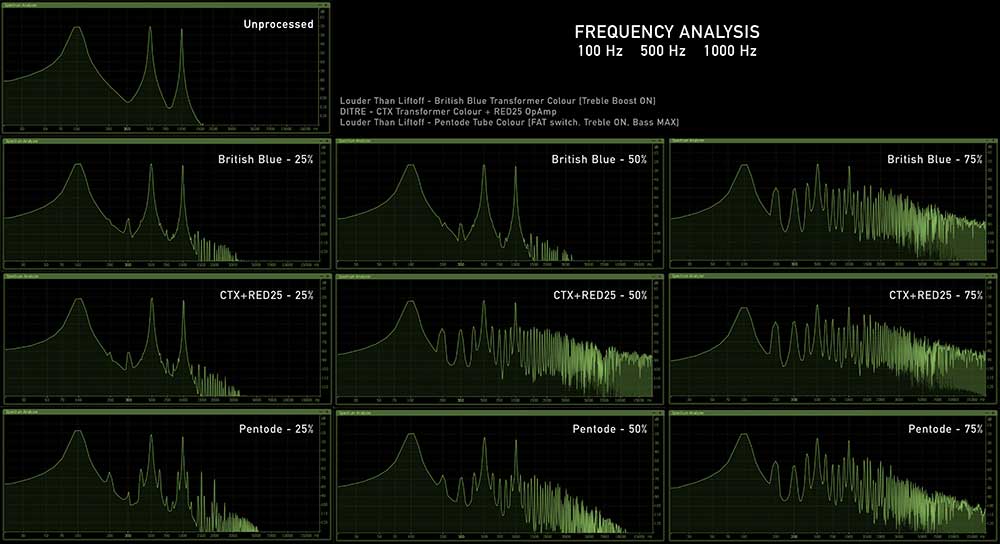
LTL The Pentode MK2 Color Module
The crown jewel in the Pentode color is a US-made NOS Raytheon 6418 subminiature tube thermionic valve that can operate in Triode (“FAT”) and Pentode (“RICH”) mode. It’s neither a fancy nor an expensive tube as you can find replacements for 4-5$. That being said, when calibrated properly in the right setting the results can be quite impressive, which is what LTL has achieved. The 6418 runs in the Pentode color module at its max plate voltage due to a dedicated miniature 32V high voltage supply.

In my opinion, what makes that color module shine is the 2- band Baxandall EQ developed by LTL and inspired by a 1960s valve mixer. I can see how Baxandall curves on an EQ would be the most complimentary choice for this color module. Peter Baxandalls’ bass and treble circuit design can be found in most hi-fi systems as well as many mastering EQs. It adopts broad and wide EQ curves that contribute to its musicality. Furthermore, those two shelves introduce extra coloration due to the slight phase delay. That inherent quality of the Baxandall design just adds to the name of those LTL modules.
LTL Royal Blue Colour Module
As the name suggests, the Royal Blue is a transformer module inspired by the old British sound of the legendary Neve 1081 amplifier. Modern Neves are associated with Carnhill transformers, which are absolutely brilliant, but the holy grail of Neve transformers was made back in the 70s by Marinair. LTL’s Royal Blue transformer is modeled by a Marinair LO2567. That vintage beast was one of the secret weapons Neve used to create their “larger than life” sound.
Another part of the 1081 circuitry which left a dent in the universe of gear-makers was the legendary 6-band EQ. And, as every piece of gear that has a sweet-spot, the 4.7 kHz boost on the shelving EQ of the 1081 gained huge popularity for being able to add tremendous musical presence to pretty much any source you’d feed through it. That feature can also be found on the LTL module.
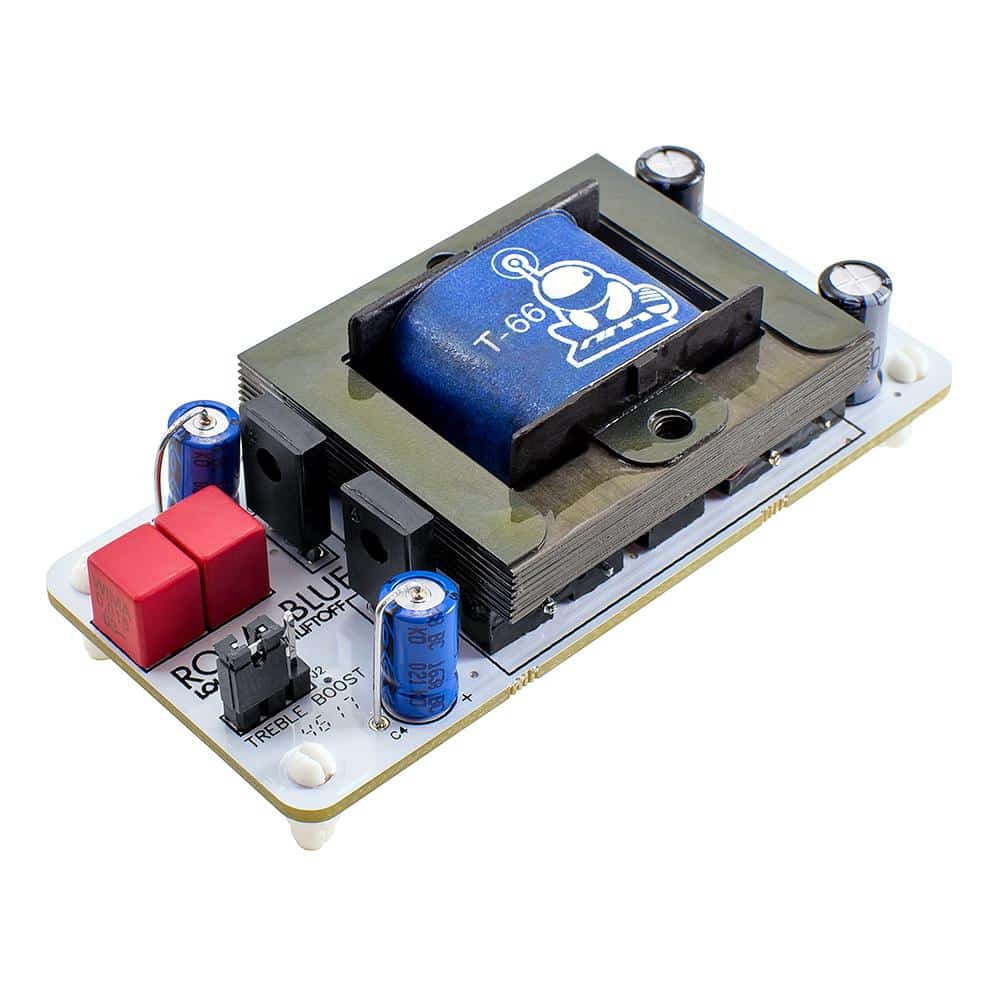
Aside from the transformer & shelving EQ, LTL has been precise and careful in choosing the right components to model and recreate in a color module with the size of a credit card. That includes a discrete transistor circuitry taken from the BA306 & BA338 Neve amplifiers and goes down to the tantalum capacitors and BC axial coupling caps.
All that sounds great on paper, but how does the Royal Blue actually sound, and can something that small live up to the huge expectations?
Unfortunately, there is no quick answer here. If you have experience with quality analog gear and you understand it you already know that something that small will never be able to replace a 1081. There is a reason why Neve transformers are the size they are and there is a reason why those 1081s cost thousands upon thousands.
That being said the Royal Blue absolutely 100% brings the flavor and character of those legendary 80-series desks in small format.
If this has created a bit of confusion trying to think of this way: A chicken-flavored gravy does indeed taste like chicken, but a spoon of it on your plate would not make you as full as eating a whole roasted chicken. The same way the Royal Blue does sound a bit like a Neve. It does color the sound similarly and it does add a bit of thickness, but you won’t fall off the chair when you turn it on. That “larger than life” sound is an accumulative effect caused by stacking multiple transformers and other coloring components that produce harmonic distortion.
DIYRE CTX Transformer Console MK2 Colour Module +RED25 OpAmp
As the red PCB colour suggests now we are in API territory. This colour module is made by the company that started this whole modular concept – DIYRE. It’s founder – Peterson Goodwyn has taken a look at the heart of that legendary American sound and has modelled the two most important components that built API’s reputation – an American-made steel transformer coupled with the right sounding discrete op-amp (DOP).
The steel transformer found in the CTX is made by Cinemag. They have been known to make excellent transformers and this miniature version stands up to the rest of their arsenal. The one found in the CTX is very much reminiscent of an old API desk in that it makes the sound focused, brings it forward and it applies very mild, musical and pleasing compression with a slight hint of presence. The sound of that steel does something special to the high-end. It slightly softens the transients in a very musical way without loosing any punch. The low-end becomes rounder and warmer. At 25% everything you feed through it just sounds sweeter.
That doesn’t necessarily mean this color modules is right for every source. The focusing effect can be very helpful in pushing forward a kick drum or a snare, but it can also slightly suck the air and openness out of a vocal. Use it with caution whenever that effect is needed.
Now, let’s talk about the DOP that comes with the CTX. After all, without this, the API sound will not be complete. DIYRE calls it the RED25 and as the name suggests it’s based on the legendary API2520 DOP topology.
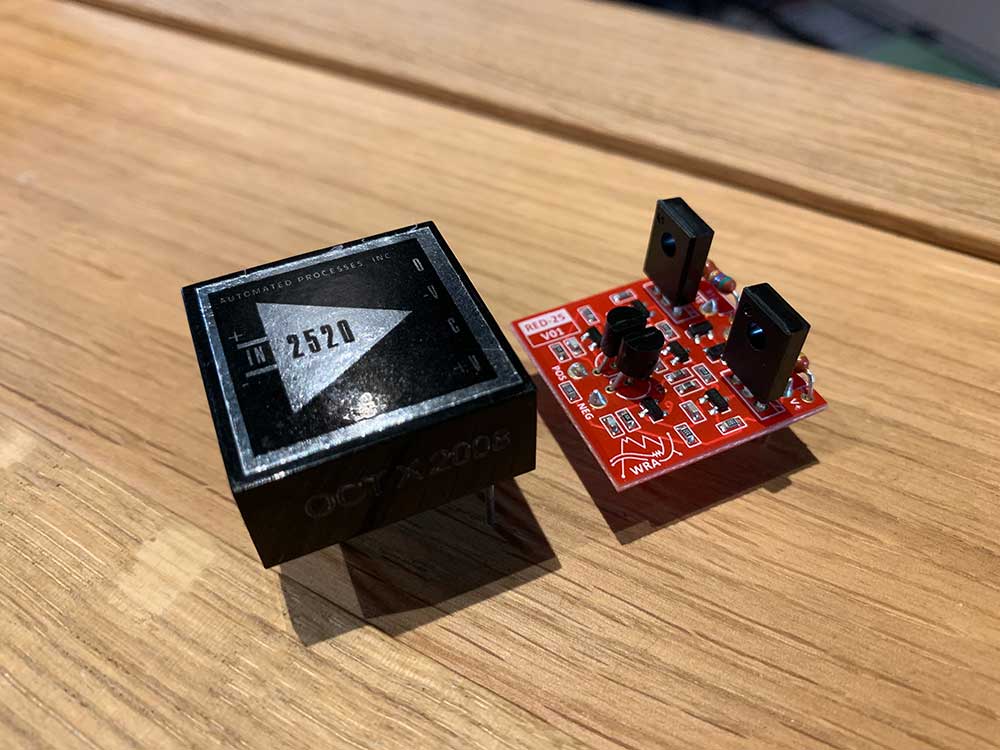
I had big plans to throw this little DOP in the bin and order myself some original API2520s, so I can get closer that legendary American sound. No disrespect to DIYRE, but come on… if I can fit an original 2520 on that colour module, why would I keep a small imitation of it.
Before I did so, I decided to take the DOP out of a genuine API 512c preamp and put it to the test. All I’m going to say here is that this was a jaw-dropping experience and my plans to buy 2520s is now of the table. In fact, if I ever need a replacement for the 2520 in our API 512c I would be more than comfortable to switch it with a RED25.
There’s no better way to convince you that those two DOPs sound literally identical other than giving you a sample to listen.
Disclaimer: to avoid inconsistencies I used the same CTX module and the same palette. All I did was swap the DOPs.
PRICE
I believe the prices of the color modules and the palette are quite appropriate. They are not too cheap, but they are not expensive either. My Harmonic Equalizer comes to 468$ with everything in it and I’ve chosen some of the most expensive modules out there. There are some (not many) half decent 500 series EQs at that price range, but while they may offer more versatility in terms of band choices, they would most certainly lack the harmonic mojo that comes from stacking those two steel transformers with the Pentode valve.
The closest thing (sound-wise) to my Harmonic Equalizzr that I can think of would be the Looptrotter SAT500 (549$). But those two devices paint a very different picture inside.
DIYRE are marketing their innovative concept as “analog plugins”, and while that theoretically is correct – I personally don’t think of it like that. For the colors to be used as plugins would mean owning more color modules than a palette can fit and being ok with constantly swapping them over. That would definitely drive the price down and makes economic sense, but I would find it too much of a hassle and a long-term durability risk.
If we compare the price of the Harmonic Equalizer to any saturation software plugin like the Vertigo or the bx_saturator, then the price is unjustified. The most expensive version of the Vertigo is made by UA and costs half of what my Harmonic Equalizer set me back. It has more features and it’s more versatile. That being said, we are comparing hardware to software in this example, which isn’t fare as both have very different benefits and drawbacks.
Respectfully if we were to compare my Harmonic Equalizer to the analog version of the Vertigo we’ll find a missing 0 in the price. In that same logic if we compare the Harmonic Equalizer to any 500-series processors we’ll discover that the modular concept by DIYRE is priced quite adequately.
DRAWBACKS
The only drawback on the hardware side of things I can think of is the annoying speaker clipping when pressing the individual bypass switches. Luckily the master bypass on the palette does not have this issue.
Other than that the only other drawback I can think of is the accessibility of the palettes and colors in the UK and Europe. At current times we all have to wait for deliveries from the US and pay import charges outside the homeland. That is a serious issue as I had to pay 95$ import charges on top of the 468$. Hopefully, that will soon change as distributors in Europe embrace the do-it-yourself gear concept.
BUILD
The palettes and modules are easy to build and are accompanied by easy to follow instructions on the DIYRE-s website. The process requires basic soldering skills and is a great starting point for anybody looking to get experience putting together kits.
In addition to the DIY kits, DIYRE offers all of their products already built as an alternative option for people willing to spend a bit extra. Some companies like LTL, on the other hand, seem to exclude the DIY element and sell already built and tested units only.
CONCLUSION
Like I said earlier – even though the color modules are priced like digital plugins I personally don’t think of them as such.
In my opinion this modular concept is an incredibly versatile way for personalization on high-end gear. Those modules allow you to create your own processors and configure them to your own specific needs. There’s a huge variety of modules by different companies that have taken advantage of this open-source concept. You can build anything from preamps, harmonic distortions, compressor, delays, and other weird mixtures of those.
In the case of my Harmonic Equalizer, I know I have a piece of kit that does a very specific thing, but it does it very well. Furthermore, it has a sound and does something that nothing else can do in one unit. There’s no singular plugin or analog equivalent that can produce the results of my Harmonic Equalizer.
This whole DIYRE concept is promising and allows people to build “preset processors’. For example, my harmonic equalizer is set with specific settings and values that I wouldn’t change often. In that respect I’m using it as a preset and I’m only running signals through it without fiddling too much and changing the settings on the modules. Many engineers that use analog gear often resort to that preset concept as they find the sweet-spots of their gear and often times leave the settings untouched. For that purpose the DIYRE palette is brilliant.
If you do want the ability to change the individual parameters of colors, I suggest you look at the palettes made by LTL. They allow access to those parameters from the front panel of the palettes, but that luxury comes at a cost.
Overall I’d say this modular concept is exciting and has great potential if more companies jump on board. I would love to seeing color modules made by long-reputable established gear makers.


